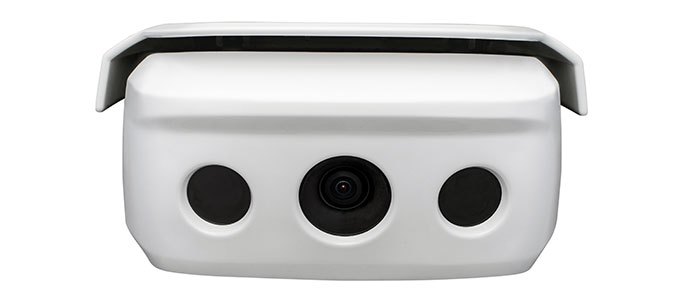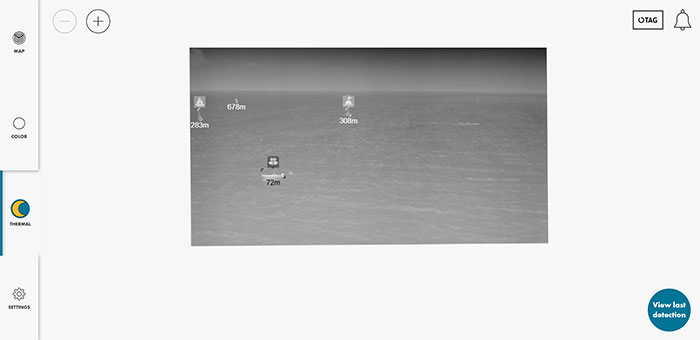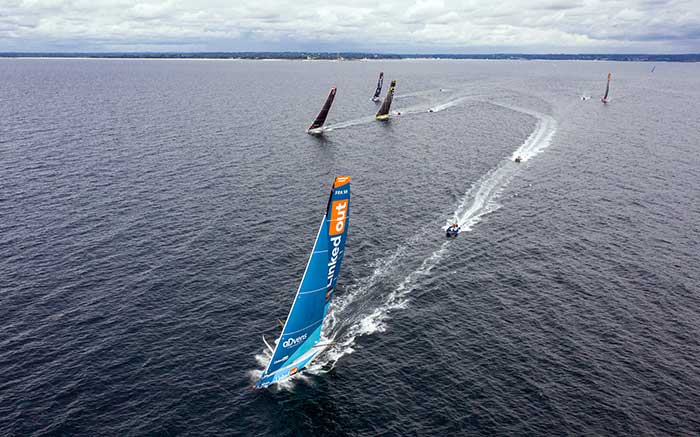Advertisement
Move over Siri and Alexa! Meet the new artificial intelligence gear designed to help boaters avoid collisions.

Photo: BSB Group
There's nothing more unsettling than the sound of your boat going bump in the middle of the night — or day, for that matter. While technologies like AIS and radar can anticipate oncoming traffic, nothing rivals the human eye for spotting partially submerged shipping containers, deadheads (logs submerged just below the surface), or a sleeping whale ... at least until now.
Meet OSCAR, the virtual lookout. Developed by France-based BSB Group, OSCAR uses machine vision, artificial intelligence, and deep learning to identify hazards and help human crews avoid collision.

A nighttime thermal image of what lies ahead. (Photo: BSB Group)
OSCAR's eyes consist of one daylight camera and two thermal imaging cameras, packaged in a 1.7-pound vision unit, mounted at the highest point on the boat. The vision unit records the surroundings and sends the video feed to a below-deck central processing unit (CPU), which uses computer vision to identify objects, determine their speed and direction, and calculate the probability of collision. Target information is then relayed to a ship computer, NMEA2000-compatible chartplotter, or mobile app. OSCAR can trigger alarms and, in higher-end models, even autonomously control the autopilot to alter course and avoid a collision.
The basic model has a range of 1,970 feet, which buys the crew 2 to 3 minutes to react at boat speeds of 6 to 10 knots. A step up from there affords autonomous autopilot controls. The top-of-the-line system, designed for high speed sail racing boats like the IMOCA 60s, which regularly exceed speeds of 30 knots, offers a range of up to 3,040 feet.
OSCAR can see at night (thanks to thermal imaging) and three times farther than the human eye in foggy conditions. While superhuman, this virtual lookout isn't perfect. As it's an optical sensor-based system, detection range is reduced in rainy conditions.
Not only can OSCAR spot a target, it can also identify one. "Trained" on 55 million images out of the box, it can distinguish among ships, yachts, and marine species. OSCAR's AI compares the detected image with its database of images to determine the level of risk the object poses. Being able to distinguish between a submerged object and a sleeping whale (which may wake up and move), helps home in on the best avoidance tactic.
OSCAR is also getting smarter due to its deep learning capabilities. BSB is partnering with ocean-racing teams to record and collect additional images for Oscar's database. The more time OSCAR spends at sea, the better it becomes at identifying targets.

OSCAR is being used on everything from 55-foot power yachts to IMOCA 60s in the 2020 Vendée Globe. The vision unit has to be mounted at a minimum height of 26 feet above the waterline, which makes it an option for most sailboats and larger motor yachts. The benefits are obvious to anyone who wants to avoid deadheads in the Pacific Northwest, icebergs in high latitudes, and submerged containers on ocean crossings. Pricing starts at $12,000, not an unreasonable sum for the shorthanded crew who wants one more set of eyes and a lot more piece of mind. Visit oscar-navigation.com to learn more.
